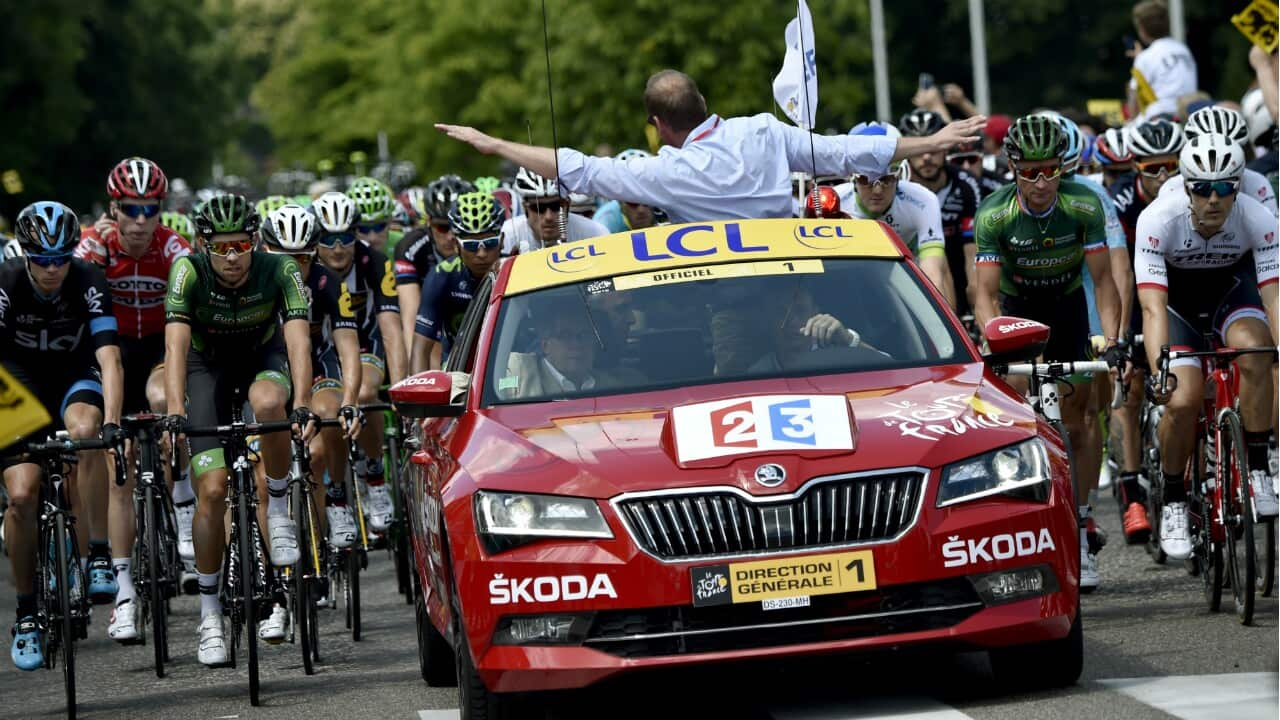Rules changes, shifts in stage finishes, different competition... Peter Sagan has had to go through a variety of challenges and challengers for the 'maillot vert'.
Only one thing has ruled him out of the race, when he was disqualified in a dubious decision at the 2017 Tour when Mark Cavendish was sent crashing into the barrier during a sprint.
What is amazing about Sagan is not that he wins a lot, but that he is competitive in almost all stages of the Tour. With the exception of the seriously high mountains, Sagan has an effect on the competition in almost every stage of the race. He'll battle against the best of the sprinters one day, face off with Julian Alaphilippe on uphill finishes and grind it out against Greg van Avermaet over the cobbles, while other riders just concentrate on a few select stages to target.
In doing so, Sagan has taken winning the green jersey to a new dimension, one that his competitors are struggling to reach. Six is the record for number of sprint jersey victories at the Tour de France, Sagan is about to make it seven.
There's a bit of a myth out there that Sagan isn't a real sprinter. To an extent, that is true, he's not as fast as the likes of Groenewegen and Viviani if you were to line them up and say 'go'.
However, when it comes to the messy finish of a Tour de France stage, with trains faltering and riders surging in the washing machine effect of the high-paced dash to the line, there is no one better than the Slovak at picking the right wheel and finding his way through.
It's gotten to the point that Sagan - bar a truly dominant sprinter - is just as good as anyone else at picking up points on the flat finishes.
Take a look at these results for Sagan from flat sprints at the Tour since 2012:
1st - 3 times
2nd - 14 times
3rd - 10 times
4th or 5th - 7 times
6th to 10th - 7 times
Worse than 10th - 3
The consistency is impeccable, and sees Sagan pick up on average 23.5 points (adjusting to current points scale) on flat stages which is between averaging 2nd place (30 points) and 3rd place (20 points). With a whopping 50 points going to first surely the path to beating is just racking up a ton of sprint wins? Easier said than done.
Take a best case scenario for another sprinter, like in the 2016 Tour where Mark Cavendish won three of the first six stages, four in total for the Tour. He finished eighth on one of the stages, missed out on a perfect Sagan stage on another and the remaining stage was a mountain stage where no one scored significant points. You would expect Cavendish to have a pretty impressive lead, but Sagan closed the advantage with a win up a seven per cent berg, and had no placing lower than sixth on the other flat stages.
Sagan was merely 29 points behind Cavendish (205 to 176) and easily accounted for that differential enroute to Paris with Cavendish pulling out of the Tour after Stage 16 with 291 points, while Sagan would got on to tally 470 for the race.
It's probably going to take one of those sort of peak years to challenge Sagan in this year's Tour, and realistically it's going to take five or six sprint wins.
So, Sagan is the model of consistency, but he's rarely built up much of a lead in the green jersey until the race enters the mountains. That leads us to the next way that Sagan builds up unassailable targets, he gets points that are simply impossible for sprinters.
Whether it be jumping into breakaways over early climbs to win intermediate sprints, sticking with the peloton to win reduced bunch sprints, tackling the cobbled stages with the best or winning short, uphill kicks to the finish, Sagan is always there. The Slovak has that rare ability of true versatility that few possess, and arguably more impressively the stamina to keep putting out efforts that most riders will save for a single push for a stage win.
In the last Tour de France Sagan clocked up 109 points on stages where none of his meaningful competitors scored any points. Alexander Kristoff was Sagan's nearest competitor and took 20 points in those stages, rolling over the intermediate sprint line back in the peloton for a few low placings.
His ability to make the breakaway in these circumstances is unerring, he picks the right move or muscles his way across to the right move, then simply collects his intermediate points and spends the rest of the stage going nowhere near the red zone as he coolly makes his way to the finish.
Crash avoidance is the other calling card of Sagan's incredible reign in the green jersey. Call it luck if you like, but for those who've seen his near sixth sense for avoiding falls in action time and again, it seems far more like skill. Think of him jumping Fabian Cancellara at Paris Roubaix, or somehow saving himself when Fernando Gaviria went down in the final metres of the 2016 Milan San Remo.
It is also a key to maintaining a green jersey tilt, Marcel Kittel was a good shot to win the 2017 green after Sagan was disqualified, but he crashed and abandoned after Stage 17.
Climbing ability counts for plenty as well, Fernando Gaviria looked to be launching the best challenge to Sagan's supremacy for years inn 2018, but couldn't keep up with the climbers on the stage to Alpe D'Huez and was forced to abandon.
The only path to relaxing Sagan's iron grip on the green jersey appears to be that next superstar coming along to challenge him. Even the supremely talented Michael Matthews can't hold a candle to the prowess of Sagan. His 2017 green jersey win was a mere 370 points, lower than all six of Sagan's totals, without Sagan there himself to compete against.
Matthews can match and perhaps even surpass Sagan in the mountains and hilly stages, certainly his 2017 win was built on similar tactics, but in the flat sprints, his challenge doesn't mount up. The head-to-head between the pair favours Sagan 89 to 27 (in races limited to when one or the other has placed in the top 10).
The parcours this year is calculated to move the needle back towards the pure sprinters slightly, with more sprint points located before climbs, less big climbs early in stages and less of the short, sharp finishes that are tailor-made for the Slovak.
That brings in the final factor, arguably one of the biggest in Sagan's arsenal, no one believes they can beat him. Sure, everyone's having a red-hot go at the start of the race, but once the race reaches the mountains, none have the heart to try and match the point-scoring ability of the three-time world champion.
The interest might last a bit longer this year, as it takes a while to get to those stages where Sagan is really favoured to start racking up those uncontested points he specialises in, but it will assuredly be another Sagan win.




